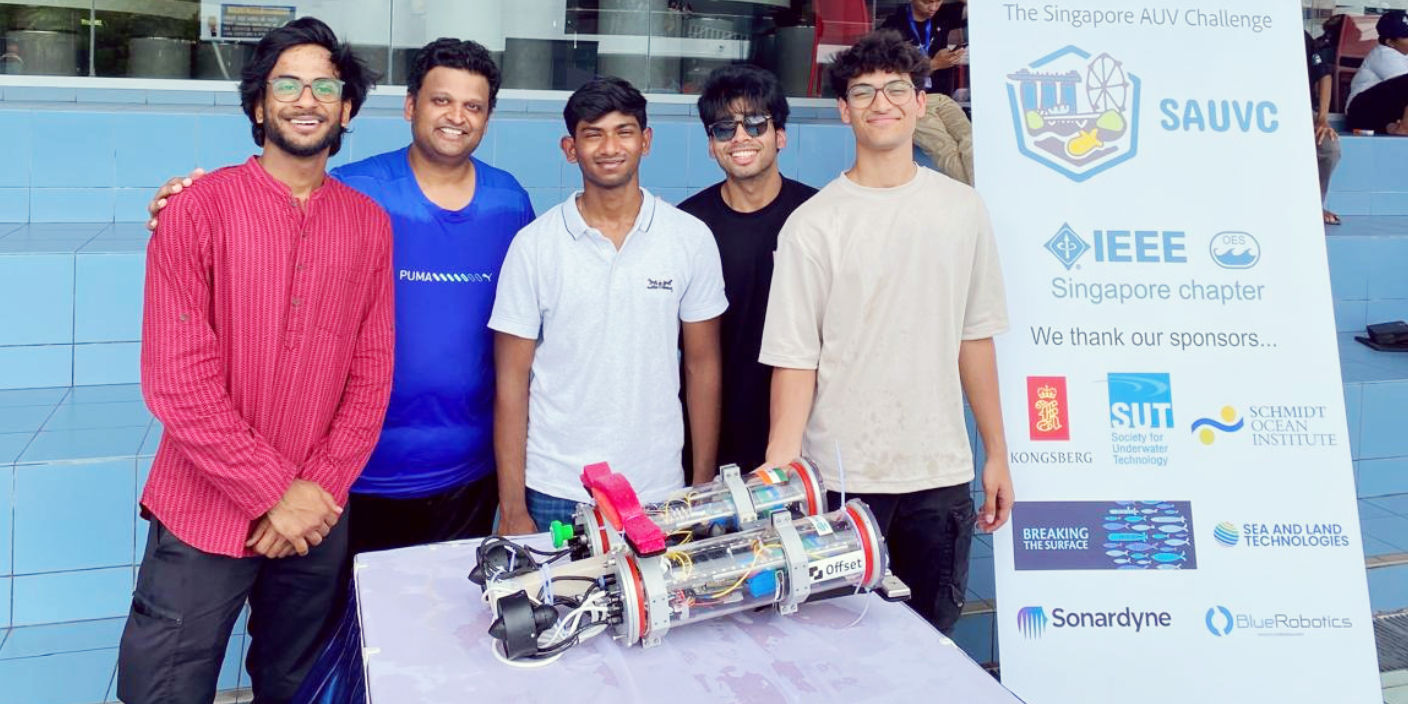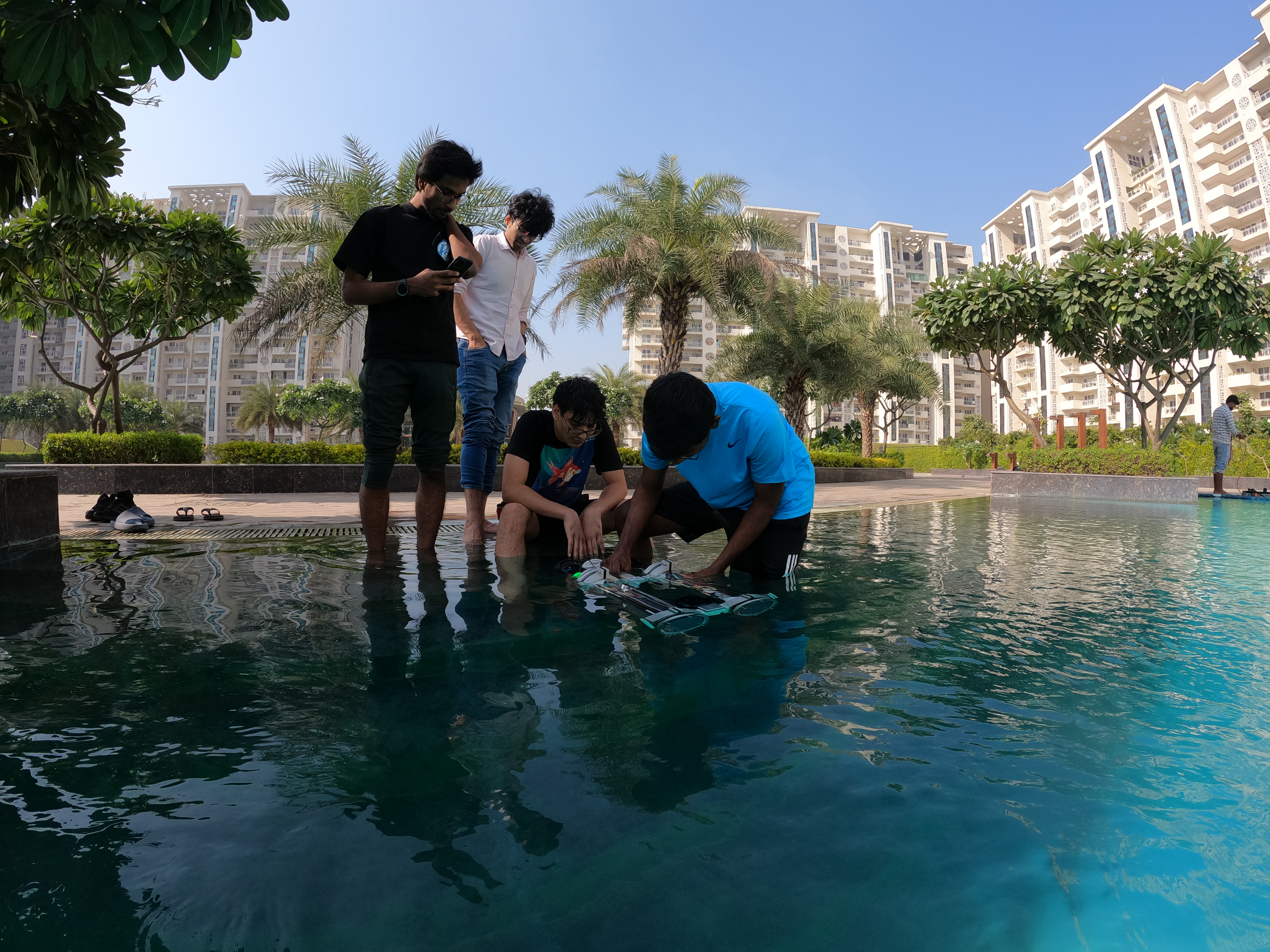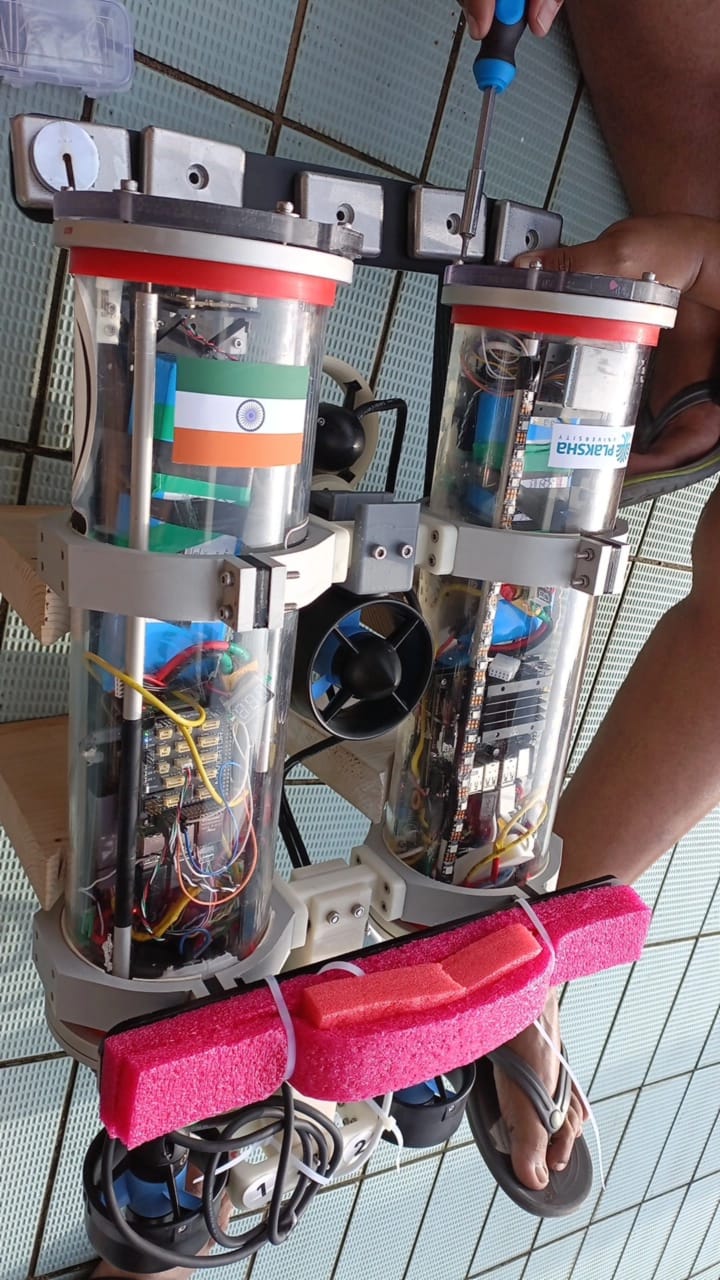
The journey of building an Autonomous Underwater Vehicle (AUV) and competing at an international level has been nothing short of inspiring for our team. It is events like these that are a reminder that beyond technical achievements, it is the people around us who push us to go further and dream bigger. With this spirit, I am excited to share the experience of our team – Nikhil Henry, Abhinav Lodha, Anshuman Sharma and Subham Jalan – at the 2025 Singapore Autonomous Underwater Vehicle Challenge (SAUVC).
2025 Singapore Autonomous Underwater Vehicle Challenge (SAUVC) is a prestigious event organised by IEEE, OES (Oceanic Engineering Society), NUS (National University of Singapore) and SP (Singapore Polytechnic). It provides a platform for teams to put their engineering skills to test by building systems that are robust both in hardware and software and can use their optimal integration to do a variety of underwater tasks like navigation, manipulation, communication, etc. Underwater robotics is in itself a very involved field, and this competition pushes its research and application boundaries even further. It requires the development of a very intelligent AI-enabled system, that can read its environment and do tasks autonomously.
It took us 8 months to design and develop an Autonomous Underwater Vehicle (AUV) from scratch, which got us our place among the top 45 teams worldwide invited to the competition in Singapore. This year's event was the largest yet, featuring 400+ participants from 14 countries and a record breaking 80 qualification video submissions. Throughout this journey, our mentor, Prof. Sandeep Manjanna, provided invaluable guidance and support, helping us overcome both technical and motivational challenges. We also thank the Robotics Lab for letting us use their tools whenever we needed and the Makerspace for letting us materialize our concepts.
Although we could not make it to the final round at SP due to integration challenges between our vision pipeline and control systems, the competition taught us skills and lessons that we would remember for life. We learnt the importance of team collaboration, time management, and most importantly, unwavering optimism. We want to use this opportunity to grow ourselves by working on the shortcomings of our approach.
As one of the smallest teams competing against established groups, we gained crucial knowledge about systems integration, underwater design considerations and international standards in robotics. Following the competition, we had the invaluable opportunity to visit NUS and Nanyang Technological University (NTU), including a special meeting with Bumblebee, a reigning champion. These visits provided exceptional insights into advanced vehicle design and development strategies from experienced teams. We are currently outlining the possible improvements based on these learnings and planning the logistics of recruiting a new team to take this project forward.
We want Plaksha to be a consistent participant at the competition and build vehicles that set milestones!
 |
 |
 |



